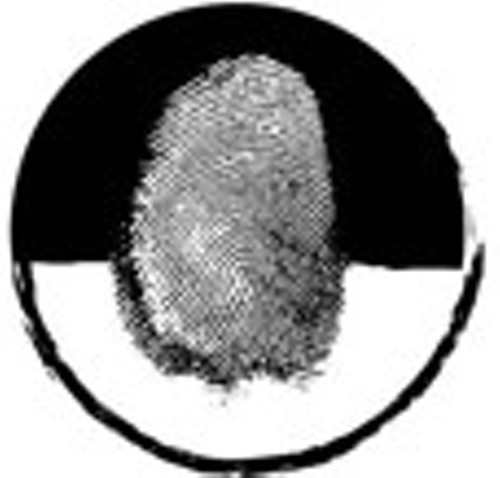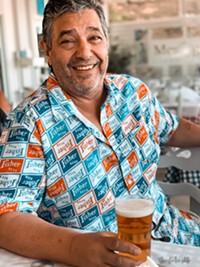Support the Free Press | Facts matter. Truth matters. Journalism matters
Salt Lake City Weekly has been Utah's source of independent news and in-depth journalism since 1984. Donate today to ensure the legacy continues.
If Americans like anything at all, it’s our folk heroes. Rudy Giuliani and Mitt Romney are both riding folk-hero crests. As the days wear on, another folk hero is emerging locally in the form of Robert Murray, co-owner of the Crandall Canyon coal mine near Huntington where six coal miners await rescue or recovery. In the first days of the mine cave-in, Murray was seen as a blustery blowhard, taking time from properly caring for the miners’ families to instead rail against unionism, global warming, high taxes, the media and anything else worthy of distracting attention from the cause and effects of the disaster itself. For a man so despising of the media (he even tried to shoo away helicopters carrying media members), he sure understands its magic.
For, just eight days after his arrival in Utah, there is a growing and glowing wave of admiration for the man, extending through the cable news networks and even The New York Times. I guess you can’t blame the Times for falling for Murray’s schtick—they did the same with Giuliani—and, if any city loves its heroes, it’s New York City. Trouble is, Murray is no hero. He’s got a pair of coveralls and some dirt on his face. So what? Take off the man’s coveralls and put him before Congress, and he becomes just one more in a long line of absentee coal-mine owners who have taken all the profits from Utah coal while calculatingly and cynically leaving the tears and hard scrabble for the locals.
In the early 1900s, my grandfather mined coal at various mines in Carbon and Emery counties including those at Sunnyside, Castle Gate and Hiawatha. His stories about the nature of that work left me in complete and terrified awe. The Castle Gate mine exploded in 1924, instantly taking the lives of 171 miners, 50 of whom were Greek. Forty-nine of those were friends and neighbors from his native island of Crete, a group of men he knew well. When he would talk to me about that, he never considered men like Murray to be heroes. Murray is not a coal miner; he is a coal-mine owner. My grandfather’s heroes were the union leaders, men like his fellow Cretan Louis Tikas who, with similar union men primarily representing the Italians, Slavs, Mexicans and other nationalities, brought honor and organization to miners throughout the West.
Considered an “agitator,” Tikas was murdered on Easter, 1914, by members of the Colorado National Guard at Ludlow, Colo., the site of a tent colony of 1,200 striking miners. Sixteen others were killed that day; 14 of them were women and children. Those men, women and children died expressing the very same human dignity seen on the faces of the distraught Huntington miner families. They wanted better lives for themselves and loved ones. They wanted decent and safe working conditions. They wanted honest pay for honest work. They willingly entered those mines, despite not always having all of the above.
I spent a year working at the Kennecott copper mine at Bingham Canyon. An accident can happen anytime in a mine (I recall one guy getting nailed by a runaway train car and another being crushed by a bulldozer), but most are of the crushed-finger or -toe variety. Many of the Crandall Mine citations were not egregiously serious, apparently garden-variety offenses (not to be diminished, since unsafe wiring can lead to fire or explosion, for example), so I don’t get hung up on the sheer number of offenses. Rather, I’m amazed that men like Murray, known stonewallers of truth before Congress and its committees, allow their mines to be monitored at all.
The fines paid tally into the near millions, according to reports. No one follows unionism anymore, but compare a fine at Crandall to the NBA fining Carlos Boozer a few thousand dollars for some discretion. He doesn’t miss it, and neither does Robert Murray. He paid his fines and went about his business of protecting his assets and producing wealth for himself and his investors. It’s nothing new. Mining money has always devalued miners. In Western mining lore, it’s said that when notified of a mining disaster in one of his mines in which a number of miners were killed, industrialist and billionaire John D. Rockefeller infamously asked, “Yes, but how many mules did we lose?” An owner must pay for a mule or electrical conduit.
The mining families? They get a blackface equivalent, a mine-owner huckster dusted in coal, to tell them everything about anything, but nothing about what they already knew: the Crandall Mine, and the retreat mining methods occurring therein, were not at the apex of mining safety. Murray knew that, too. He knew men would work in his mine at the barely tolerable wages he was willing to pay them, for they are, after all, coal miners.
When crews from nearby union mines offered assistance, they were sent packing. Too many Americans decry unionism, thinking only jealously of teachers (who deserve more money) or pro athletes (who do not). But unionism was never all about money. It was equally or more about safe working conditions. Murray must have feared those union men might notice more than just some bare wires or loose bolts. He must have feared those men would see the Crandall Mine for the deathtrap it is. He must have known he couldn’t buffalo those union men as easily as a paid-off congressman. Murray is no folk hero. That’s not coal dust on his face, either. That’s the memory of coal miners past, and it’s about time he paid their dues, too.
StaffBox
Have you ever had a job other people consider dangerous? Did you at the time?
Doug Kruithof: Yes—those dehydrated onions at McDonalds stay with ya forever!
Natalie May: I use to risk my life every day cleaning bloody surgical instruments at a local hospital. My mom was never very fond of the job. Once I saw a chopped-off arm … that was pretty cool.
Emily Prachthauser: I was a tennis instructor. One would expect that the danger would be students hitting instructors in the face with a racket or a ball. But, no. I tripped over a tennis ball all on my own and sprained my ankle.
Benito Chacon: I worked for the local cable company. People do not mess around when it comes to their cable!
Lisa Hines: All through college, I worked at the Health Sciences Library at the U. You might not think that sounds very dangerous, and initially neither did I, but after multiple research scientists attempted to smash me between the compact shelving on numerous occasions, my opinion changed drastically.
Faith Burnham: I used to direct traffic at a major amusement park. Dodging out of the way of tour buses packed with coaster fanatics was a daily event! I don’t remember fearing for my life, but I do remember imagining how awesome the insurance payout would have been if they had actually hit me …
Stephen Dark: When I was 18, I cleaned floors in a hospital for a year to pay for a Kerouac-inspired trip across the United States. I’m sure every patient whose bed I smacked out of the way with my floor polisher, which came perilously close to unplugging life support systems, viewed me and my job as potentially lethal.
Justin Healy: I worked in a pumice factory for three years. Open machinery and conveyor belts with no guards. Tons of dust in the air all the time with no respirators. Lots of fingers, hands and lungs lost there, I tell you.
Nick Clark: As a kid, I used to set up steel targets at the old Holladay Gun Club. I never thought it dangerous to have only an itchy finger separating me from an early death, even as hot bullets were ricocheting onto me in the “safe” bunker.
Jackie Briggs: Yes. I worked at this Applebee’s in Portland as one of my first jobs. We literally had a security guard on duty at all times. Once this dude wouldn’t pay his bill and said his girlfriend was going to “kick my ass if I asked again.” I said, “Fine, but make it quick. I’m almost off.”
Stephen Matney: I have vivid superhero dreams all the time. Flying and defeating enemies with telekinesis is more dangerous than you would believe! If you die in your dreams, you die in real life, so I hear, so I think I deserve some accolades or something.
cw
More by John Saltas
-
Instead of a Statue of Responsibility, Utah could build a statue of shame depicting Mike Lee.
Private Eye
- Apr 17, 2024
-
Utah's Statue of Responsibility invites high-brow thinking, and a few low-brow jokes.
Private Eye
- Apr 10, 2024
-
John Stockton's entitled to his privacy and his COVID opinions, but not false facts.
Private Eye
- Mar 27, 2024
- More »
Latest in News
Readers also liked…
-
Raise a glass for E.L.T Harrison, architect of the Beerhive building on Main
Small Lake City
- Oct 11, 2023





